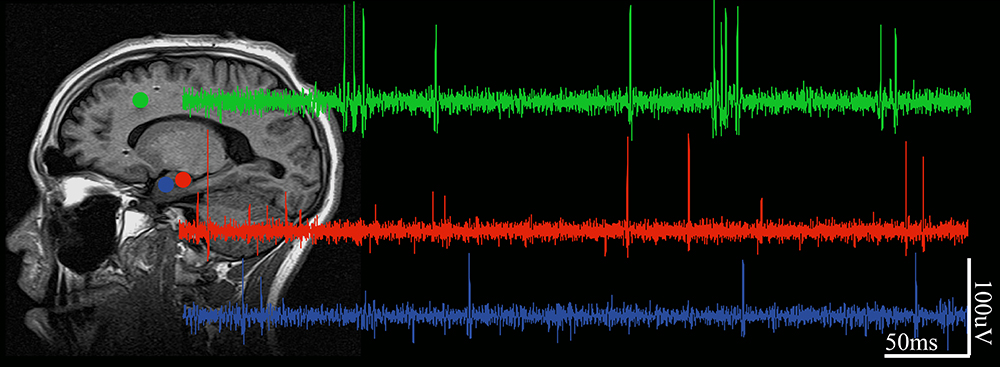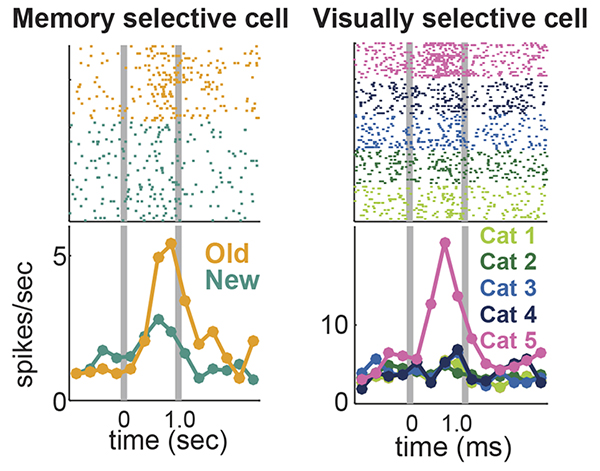Research Areas
Work in the Rutishauser Laboratory focuses on several key areas of interest.

| Example extracellular recordings from three different brain areas in a patient with implanted electrodes. |
Learning and Memory

Example cells in the human medial temporal lobe that are selective for memory (left) and visual categories (right).
We are studying the mechanisms by which human memories are formed, consolidated and retrieved. We are particularly interested in single-trial learning, episodic memory and confidence judgments. Key interests include novelty detection, the role of brain rhythms, inter-areal communication and routing, single-neuron representations of memory engrams, the role of dopamine in declarative memory, contextual reinstatement during recall and the maintenance of working memories. We study memory to understand how human memory works as well as to discover how it is disrupted by neurological and psychiatric diseases and how these disruptions can be ameliorated.
Social Cognition
We are examining how the human brain processes, identifies and remembered faces and how information about faces is used to make decisions and memories. Our focus is the amygdala, and includes both basic mechanisms such as representation of facial features by single neurons as well as impairment thereof by diseases such as autism.
Decision Making
Decisions in daily life rely on a mixture of sensory inputs (such as faces), memories and goals. We are investigating the mechanisms by which memories and context are utilized for making goal-directed decisions. A second aspect of decisions is the self-monitoring of the quality of the decisions we make, in particular confidence judgments and error monitoring.
We are investigating how such internally generated processes drive decisions and learning and how these processes are impaired in Parkinson's disease and obsessive compulsive disorder (OCD).
Methods Development
We are actively developing new methods and tools, in particular as it pertains to microelectrodes for humans, stimulation techniques, algorithms for signal processing, closed-loop real-time processing of spikes, spike sorting, spike train analysis and statistical methods. We are actively developing and maintaining the open-source spike sorting toolbox OSort.
Open Science and Data
We are active in defining and adopting standardized data formats and in releasing well described standardized datasets publicly. We are actively engaged in the Neural Data without Borders (NWB) data format development and have standardized and released several large human single neuron datasets and accompanying analysis code to the community.
Software tools that our lab provides:
- OSort – spike sorting software package
- StimOMatic – closed-looped stimulus control
- NlxToMat – import of neurophysiology data into Matlab
- NWB – formatted single-neuron dataset during recognition memory
Contact the Rutishauser Lab
127 S. San Vicente Blvd.
Advanced Health Sciences Pavilion, 8th Floor
Los Angeles, CA 90048